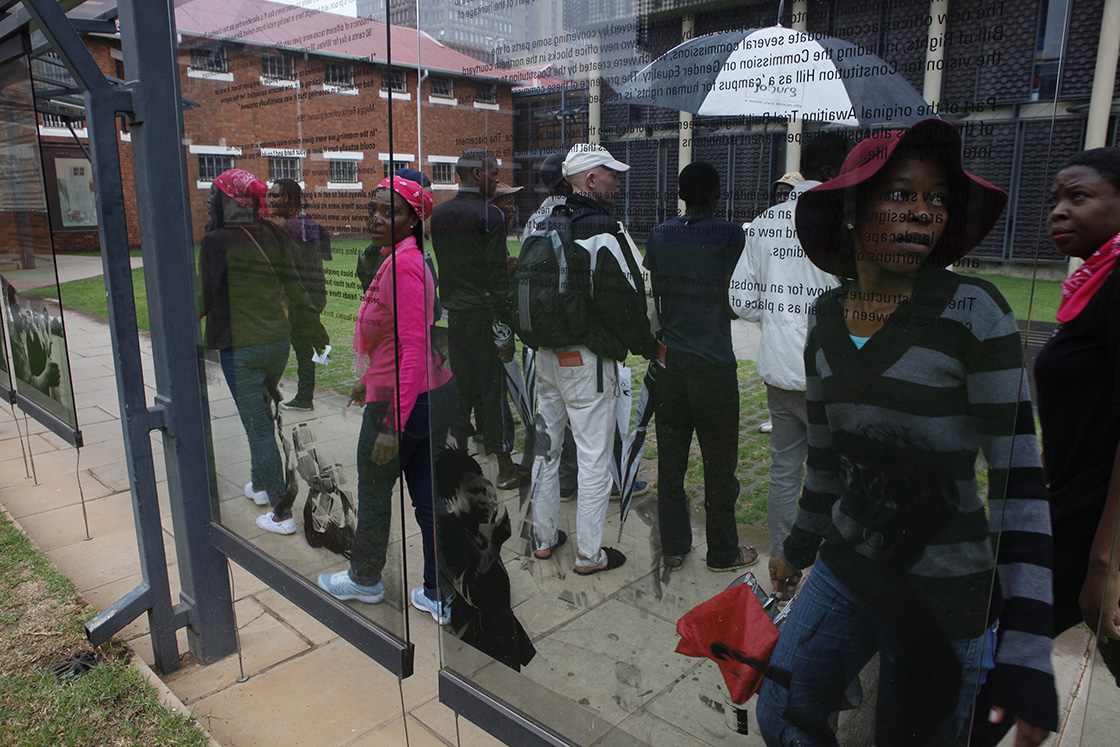Memory Work: South Africa After Apartheid
In 1994, Nelson Mandela had just been elected president of South Africa after serving a 27-year prison sentence. Atlantic began looking for ways to support this country on the brink of radical, hopeful change.

When President Mandela signed South Africa’s progressive new constitution in the early 1990s, Harvey Dale, Atlantic’s founding president, saw an opportunity. “It was the prospect of a new era—a modern constitution, embodying civil liberties and the rule of law, and avoiding scorched earth,” Mr. Dale explains.
Atlantic first focused on the Constitutional Court, with the aim to help young black lawyers get degrees and clerkships. “Support the people who will populate this new system and do it in a way that reflects the aspirations of a post-apartheid society,” Christopher G. Oechsli, Atlantic’s president and CEO, explains.
That work segued into a focus on higher education from 1996 through 2002, when Atlantic opened its regional office in Johannesburg. Gerald Kraak, who had been working in South Africa’s human rights sector for more than a decade, became the country’s first program director. “We started a significant expansion,” Mr. Kraak said. “And another shift in focus to rights and reconciliation and population health, where we thought we’d have the biggest impact.”
‘A real place of remembrance’

Beyond the serious health challenges, there were also old and deep psychological wounds that had to be addressed in South Africa. “There was no place to discuss past atrocities,” Mr. Kraak explained. “An apartheid museum was one critical step toward reconciliation.”
Atlantic began making grants to help surface and share once-secret archives that collectively told the story of colonialism, the birth of apartheid and the struggle against it. Then, the organization contributed to the transformation of Johannesburg’s Old Fort, a reviled prison under apartheid that held many political prisoners, into a museum that commemorated the struggle against apartheid—and that occupied a space right next to the new Constitutional Court in an area now called Constitution Hill. “It’s become a real place of remembrance,” Mr. Kraak said. “It symbolizes both old and new South Africa.”
“Bringing these stories into the public realm meant beginning to create a debate about what happened in the past. It pushes people to ask, what’s the meaning of reconciliation— and common citizenship?” — Gerald Kraak, former Atlantic program director
In the same vein of healing, Atlantic funded the District Six Museum in Cape Town, which commemorates the forced removal of people of color from the city center to its outskirts. “That was a very painful and brutal process,” Mr. Kraak said. “This museum is another way to remember South Africa’s past.” The nearby District Six Museum Homecoming Centre offers a place for returning families to gather, share stories and engage in the “memory work” vital to the healing and reconciliation process.
‘A symbolic entrance to the past’

Neither museum is as infamous as Robben Island, the prison where Nelson Mandela spent the bulk of his sentence. “To get to Robben Island, you catch a ferry from the docks in Cape Town,” Mr. Kraak explained. “Once you get to the island, it’s just the prison, so the idea was conceived to build a gateway which was a mix of auditorium, exhibition space and shops so people have an orientation toward what they’re going to see at the prison.” Atlantic provided funding for the Nelson Mandela Gateway, which also functions as a symbolic entrance to the past that helps visitors envision a better future.
“Today when I look at Robben Island, I see it as a celebration of the struggle and a symbol of the finest qualities of the human spirit, rather than as a monument to the brutal tyranny and oppression of apartheid.” — Nelson Mandela
Part of Atlantic’s goal for the future has been to encourage other philanthropists—which is why Atlantic has partnered with the Inyathelo Institute for Advancement, an organization that promotes considered, strategic philanthropy. “The nature of giving is quite conservative here, but we’re beginning to see a number of individuals coming forward and publicly saying they’re going to put their money into social justice issues,” Mr. Kraak said. “So the work has really been about trying to change mindsets.”
> Learn more about our South Africa projects
Top photo: Visitors look at the display at the Women’s Gaol, which used to house female political prisoners.
